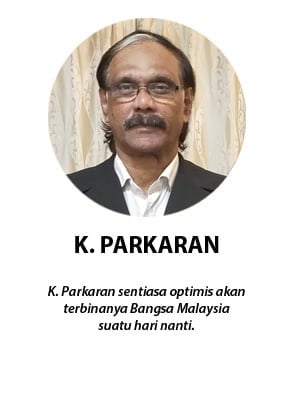
In most countries, politics has followed a binary trajectory. Although multiple parties exist, the trend has been towards two dominant political forces, mostly in the form of coalitions in which parties gang up and form the governments.
In Malaysia, we saw the two-party system seriously taking shape in 2008 when Pakatan Rakyat broke the Barisan Nasional’s dominance, and again in 2018 when Pakatan Harapan ousted BN from power.
In November last year, with no party in a position to form a government, PH combined with BN and East Malaysia’s GPS and GRS to form the unity government, with Muda and Parti Bangsa Malaysia as allies.
Now, Muda president Syed Sadiq Syed Abdul Rahman, the party’s sole MP, has pulled out and announced that Muda will become the “third force” in Malaysian politics.
Muda leaders might want to know that most mature and stable democracies of the world have settled for binary party options: for example, Labour against Conservatives in the UK, and Democrats versus Republicans in the US.
In the past, many individuals and groups in Malaysia had tried to stand as independents, especially in Sabah and Sarawak, but made no impact or headway, ending up in the political dustbin or as tools of bigoted parties.
Any Malaysian politician who still thinks that there is room for a third force or for independent candidates is not accepting reality.
Obviously, the attraction to this kind of party system in Malaysia is linked to the multiculturalism that is reflected in the make-up of these coalitions. These groupings claim they discourage discrimination against minorities and encourage integration in the political ecosystem.
The two-party system hardly allows for ethnic colouration of the party since people of various ethnicities, religions and ideologies pull together in the coalitions.
Besides, it moderates animosities and ethnic chauvinism with coalitions playing musical chairs to try and form governments each time after an election. Also, the fact that these two parties have relatively equal strength is good for competition in the country.
Although Muda is a multiracial party, issues of race and religion seem to be dominant in the current changing political landscape and everything else seems to be working against the Bangsa Malaysia concept espoused by Muda.
In 2018, PKR was the only multiracial party that was the dominant force in a mixed coalition when PH won the general election. PKR had the most number of seats in Parliament and in the Selangor legislature – but that position did not last.
There are signs the party will not fare so well in future elections.
With the opposition Perikatan Nasional launching a Malay-Muslim onslaught, pluralism is losing its lustre and there is a serious possibility that ethnic inclusiveness in politics will not be a choice for most Malaysians soon.
This is compounded by the electorate, educated or not, who seem too lazy to reason, think and analyse multiple possibilities like a third force. They prefer to make decisions based on two defined options.
In most democracies, a third force is usually seen as a protest movement and not a serious contender for power, often being led by people who are disgruntled and aggrieved coming together, not based on ideological considerations or shared vision.
Going by the bashing that Muda received at the recent state elections, where all its candidates lost their deposits, even Muda founder and chief Syed Saddiq may lose his Muar parliamentary seat if he decides to defend it at the next election.
The party risks being annihilated and will end up as a spent force if it stands on its own as a third force. - FMT
The views expressed are those of the writer and do not necessarily reflect those of MMKtT.


No comments:
Post a Comment
Note: Only a member of this blog may post a comment.